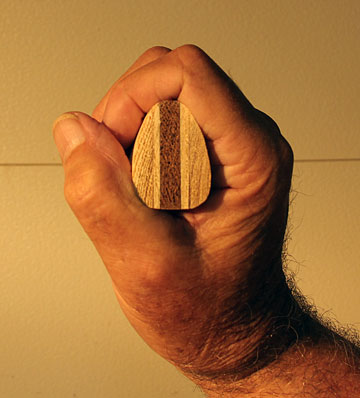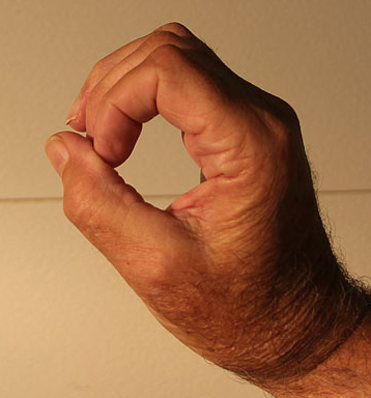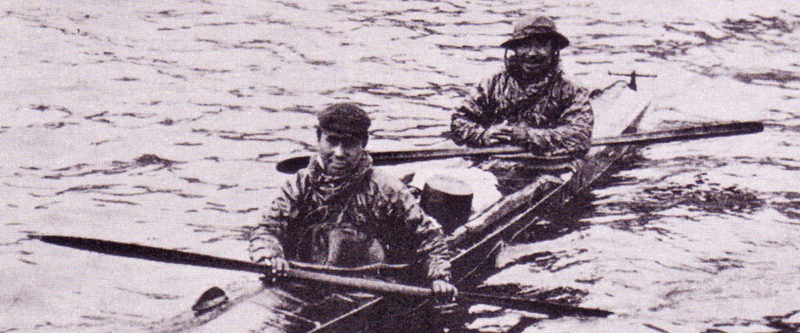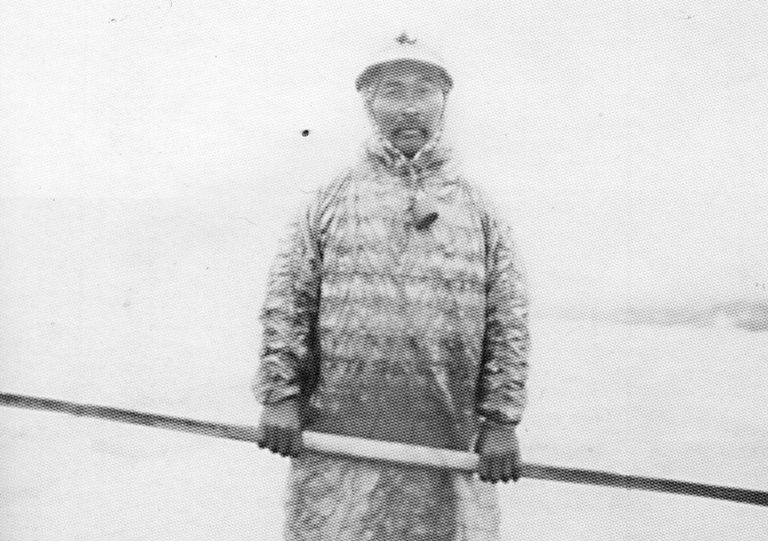My New Aleut Paddle
In 1993 when I began building baidarka style sea kayaks, and after meeting John Heath, I started building (what I thought) was an Aleut style paddle. My first design for an Aleut style paddle was adapted from drawings and measurements taken from a documented 1850 Aleut paddle. The drawings I worked from were very tiny and details were few.
The major differences between the Greenland and Aleut paddles are; the Aleut paddles are typically 8' long and asymmetrical. The blade of the Aleut paddle is flat on one side and has a raised spine on the other. The Aleut loom is triangular in cross section and indexes the blade angle.
In 2009 I visited the Smithsonian Institution storage facility to examine a number of Aleut paddles and kayaks in their collection. I examined and handled six Aleut paddles, 8' long and longer. Unfortunately the Smithsonian will not allow me to use my photos for publication here. However, the drawing above details the paddle features I saw.
It was a profound and striking difference to actually handle real paddles, rather than to study tiny drawings in a book. These Aleut paddles were very different from the "Aleut" paddle I had been making. Most striking were the loom shapes. These looms were very triangular in cross section. The paddles I handled at the Smithsonian actually had a more triangular shape than the photo below left. I rounded the corners a bit more in my version of these paddles.
The second striking difference I noticed in the Smithsonian paddles was the flat blade surface was totally offset to align with the flat bottom triangle face of the loom. Thirdly, it was surprising to me to see how fast and how sharply the transition of the loom to spine dove into the blade with only a small spine continuing to the blade tips.
I had paddled with many Euro style paddles with a spine on the back of the blade, so I naturally assumed this to be the case with the Aleut paddle. However, years later I noticed other builders of "Aleut" style paddles advocating the spine as the power face. The "power face" being the side of the blade facing the stern of the boat as the paddler pulls forward on the loom.
From the perspective of a wood worker the sharp transition of the spine could only be structurally viable as the back of the blade. Water force against the flat side of the blade will be supported more and more by the ever increasing spine thickness like the leaf springs on a vehicle. With force applied to the spine side of the blade, only the smallest thickness of the blade will bare all the force and the larger, spine to loom transition area wood, will be libel to split apart. I experienced this weakness one day when I fell on the paddle blade while in my grip, with the force of my body landing on the flat face of the blade. I split the wood on the spine.
"Aleut" paddles made by others pay no attention to loom shape. To me this is crucial in determining the power face. The flat base of the triangular loom aligns with the flat blade face and the top crest of the triangle aligns with the spine of the blades. The triangular loom of the Aleut paddle fits the natural shape of the hand perfectly and "indexes" the blade angle. Compare the photos below.
When I paddled white water, we taped a pencil to the paddle shaft to "index" the blade angle. In dynamic water knowing the blade angle is critical to staying upright. The paddle becomes part of your body so no thinking is involved, there is only muscle reaction. The way the small end of the triangle on the Aleut loom fits into the shape of the first joint of the finger is clearly an indexing feature. An indexed loom will allow you to stop guessing which way your blade is orientated to the grip area of your paddle and you'll have less trouble with diving blades while sculling and missed rolls.
Here are a couple photographs of Aleuts holding their paddles. I have seen, and there are available on the internet, more historical photos of Aleuts clearly orienting the spine side of the blade as the back of their paddles. For further discussions and photos on this topic see Wolfgang Brinck's Skinboat Journal.
For all the reasons stated here, I believe the spine side of the Aleut paddle to not be the power face, as some would suggest.
Update - 10/21/15 - Steve Gordon from Israel called me today and he said he had three Aleut paddles he made, break on him in surf. He asked if I had an idea of why this might happen. Steve had seen this page with my information on Aleut paddles. I asked him which side he used for the power face. He said, " The spine side." I told him the spine side was not the power face and would be likely to break under tension. The spine will be stronger in compression when the flat side is power face.
See Steve's blog about this @ http://www.homemadekayaks.blogspot.co.il/2014/03/breaking-aleutian-paddle.html
My new Aleut paddle design reflects the lessons learned from my visit to the Smithsonian.
The use and strokes of the Greenland and Aleut paddles are otherwise similar. The differing paddle lengths may reflect the purpose for which they were used.
The Greenland Inuit hunter was a solitary stalker of seals. Stealth was of utmost importance. Kayak rolls were an obsession because hunting alone, their lives depended on rolling. While the Inuit could handle rough seas, they were not the norm. The Inuit paddled part time, when their seas were not frozen.
The Aleut hunters worked as a team to chase down prey. Speed was important, which is why their paddles were longer. A seaworthy kayak and rough water skills were needed to handle the consistently bad seas around the Aleutian Islands, which never froze. As a full time paddler in a group, rolls were not an obsession.
It's easy to ignore my points if you wish to do what you want to do. Perhaps you will interpret the forcefulness of my opinion as an old school "Thou Shalt". Today we do things for fun which were survival in the past. We forget "Thou Shalt" was life saving experience passed down to the next generation. In the small arctic groups struggling for survival, the death of one hunter might put the whole group in jeopardy. The Aleuts risked their lives every day of the year in the extremely treacherous seas around the Aleutian Islands, which never froze. They depended on this tool every day of their lives.
As recreational paddlers we can choose to use whichever blade face we like. We may never stress the Aleut paddle design to it's physical or design limits.
We will never choose to face the ruthless seas the Aleuts paddled routinely.
Rob Macks
Laughing Loon
PS - I remember seeing people paddling on a white water river in New England in 1980 and thinking, "They must be out of their minds!"
A couple years later I went out with a woman who paddled white water, and who taught me to paddle white water. In just a few years I was enjoying my skills, dancing through dangerous rapids. Confused, rushing, exploding waters, that looked as nonsensical as the text of an upside down book, became a clear map explaining paths and pitfalls as I learned to "read" the waters. In this group of paddling friends, their children were soon enlisted in the fun. Teary eyed, kids, shivering in eddies, quickly became outrageous "hole hogs" as teenagers, and "river professionals" in their twenties. Those kids climbed our shoulders so fast.
I can't imagine the skill and knowledge passed from father to son, for generations, in a culture based on year round sea kayak hunting. I have profound respect for the skills and technology the Aleuts perfected in the most hostile, inhabited environment in the world.
I think, with years of white water paddling experience, one can begin have an insight into how unforgiving dynamic water is and how close to the edge of disaster one can dance. A whole culture based on paddling routinely stormy seas must perfect and hone their tools and skills each day, in ways we can't imagine.
I'm fascinated by the Aleut baidarka kayak and the Aleut paddle designs. Few small boats around the world approach the complexity of these designs. Perhaps because few cultures had to deal with such a harsh environment. My training is as a sculptor, and a maker of all things. All my life I have visually inspected objects, taking them apart and putting them together in my mind. And making all kinds of things. Learning the magic properties of each material. I spent hours in art school, being told by art historians, that most things we see today are poor reflections of inspirations of the past.
This is why I look to the Arctic Elders for inspiration and study historical documentation of their designs. This is a deep well. I know their designs were worn with time and experience and have a true heart. As I work to make a paddle I feel a connection with the past and become another link in the chain.
|


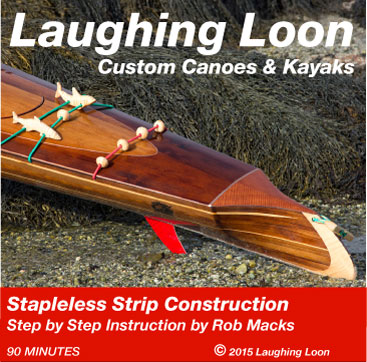
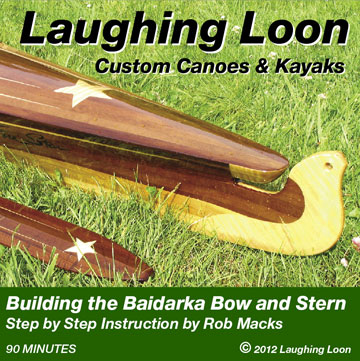
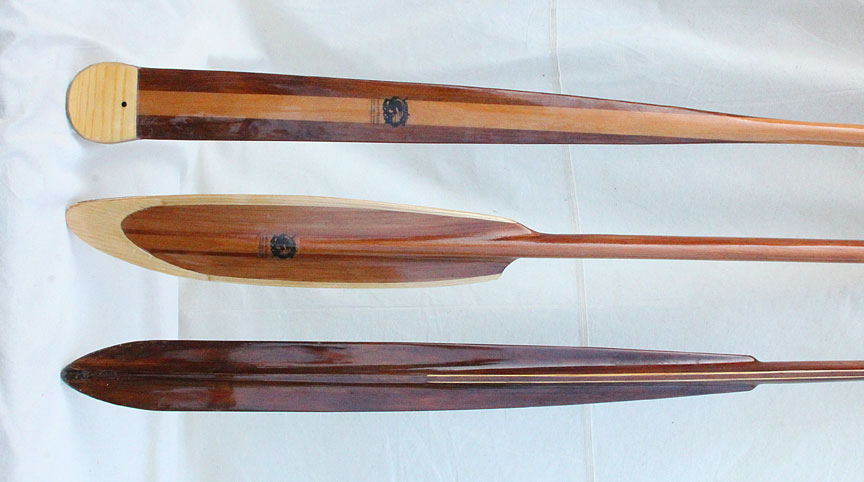
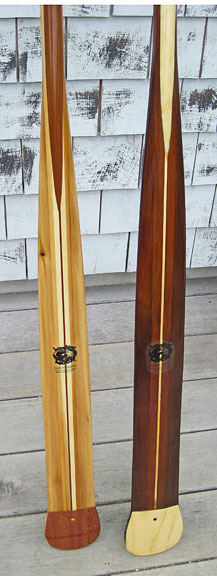










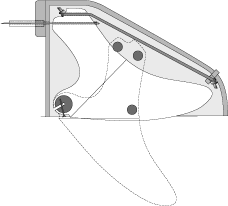 The Skeg - Why a skeg? A skeg is a device which increases tracking in certain sea conditions.
The Skeg - Why a skeg? A skeg is a device which increases tracking in certain sea conditions. 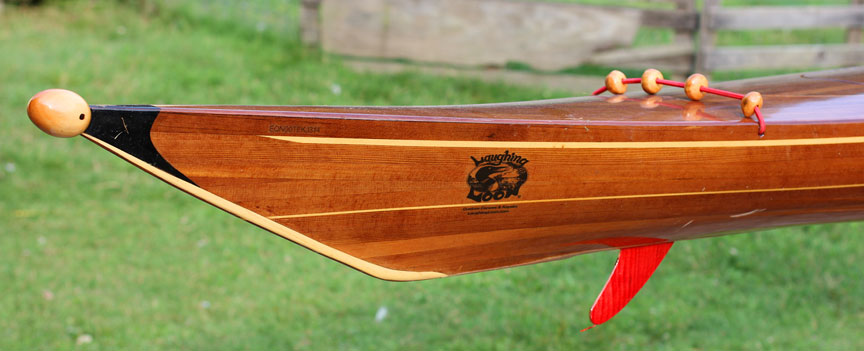
 The Seat -This is the most comfortable seat you'll ever use. Carved from closed cell foam to fit you!
The Seat -This is the most comfortable seat you'll ever use. Carved from closed cell foam to fit you!
